There is a city in Switzerland that has dedicated itself to photography: it is Winterthur, a town of just over one hundred thousand inhabitants in the canton of Zurich, where two independent institutions jointly run a single center, despite having different purposes. Part of theSchleife industrial area (about 1,300 square meters in total) was repurposed between 2002 and 2003 to house the Fotostiftung Schweiz and the Fotomuseum Winterthur, which together make up the Fotozentrum Winterthur. Both aim to deepen and introduce enthusiasts and experts to the many facets of photography; however, respectively, the Fotostiftung Schweiz is dedicated to photographic heritage and the Fotomuseum Winterthur focuses primarily on contemporary international photography and the masters of photographic history. In addition, the entire building houses permanent collections and temporary exhibitions, and spaces dedicated to study and recreation, such as storage rooms where black-and-white and color photographs are brought together, a specialized library, rooms designated for lectures and seminars, a store, a large reception room, and the café-bistro.
The Fotostiftung Schweiz (Swiss Photography Foundation) is the most important center of Swiss photography. It was established in 1971 and aims to preserve, enhance and disseminate photographic images. Currently, the collection and archives have over fifty bequests and about fifty thousand original prints by recognized photographic artists. The Foundation organizes three to four exhibitions each year within its premises, publishes works on Swiss photography, and supports Swiss photography through acquisitions. Also enriching the collection are permanent loans from the Swiss Confederation and the Friends of the Fotostiftung Schweiz.
Active nationally and internationally and accessible to all, the Swiss Foundation for Photography focuses primarily on the history of photography and its current significance; in particular, on Swiss photographic production from its beginnings to the present. In cooperation with museums and archives it conveys and protects the Swiss photographic heritage.
Photography takes on two aspects for the Foundation: it is a historical document and a means of expression. It therefore becomes essential to their integrity in order to appreciate them both from a documentary and more purely artistic point of view. For this reason, the Foundation studies and documents the photographs that enter the collections, contextualizing their origin and use. Contemporary photographic works are useful for understanding developments in the photographic medium.
As mentioned above, the Fotostiftung Schweiz brings together in particular shots that are closely related to Switzerland, with a preference for artists who have made a significant contribution to the development and renewal of modes of expression, thus art photography, but also works of national and international scope.
Therefore, entire archives, including negatives, positives and documents, donated by photographers, individual works or groups are part of the collection. This fulfills the goal of covering as many as possible of the various historical forms in which photography has presented itself over time (constantly being expanded through donations, acquisitions, and permanent loans), as well as the desire to hand over the Swiss photographic heritage to future generations. The Foundation’s collection is also partly accessible to the public through an electronic database that is continuously updated and shows the description, technical and material details of the works. The images in digital format are then available for dissemination and reproduction, without of course replacing the original. However, some prints of photographs (books and magazines) are true works of art. The Foundation includes the Photographic Collection of the Swiss Confederation, the Collection of the Friends of the Swiss Foundation of Photography, the Collection of the Schweizerischer Werkbund SWB, the Interartes Photographic Collection, the Meistersammlung des Schweizerischen Photographenverbandes SPHV, the Martin Lehner Collection and the Bernhard Rickenbach Collection.
 |
| The Fotozentrum in Winterthur |
 |
| The Fotozentrum of Winterthur |
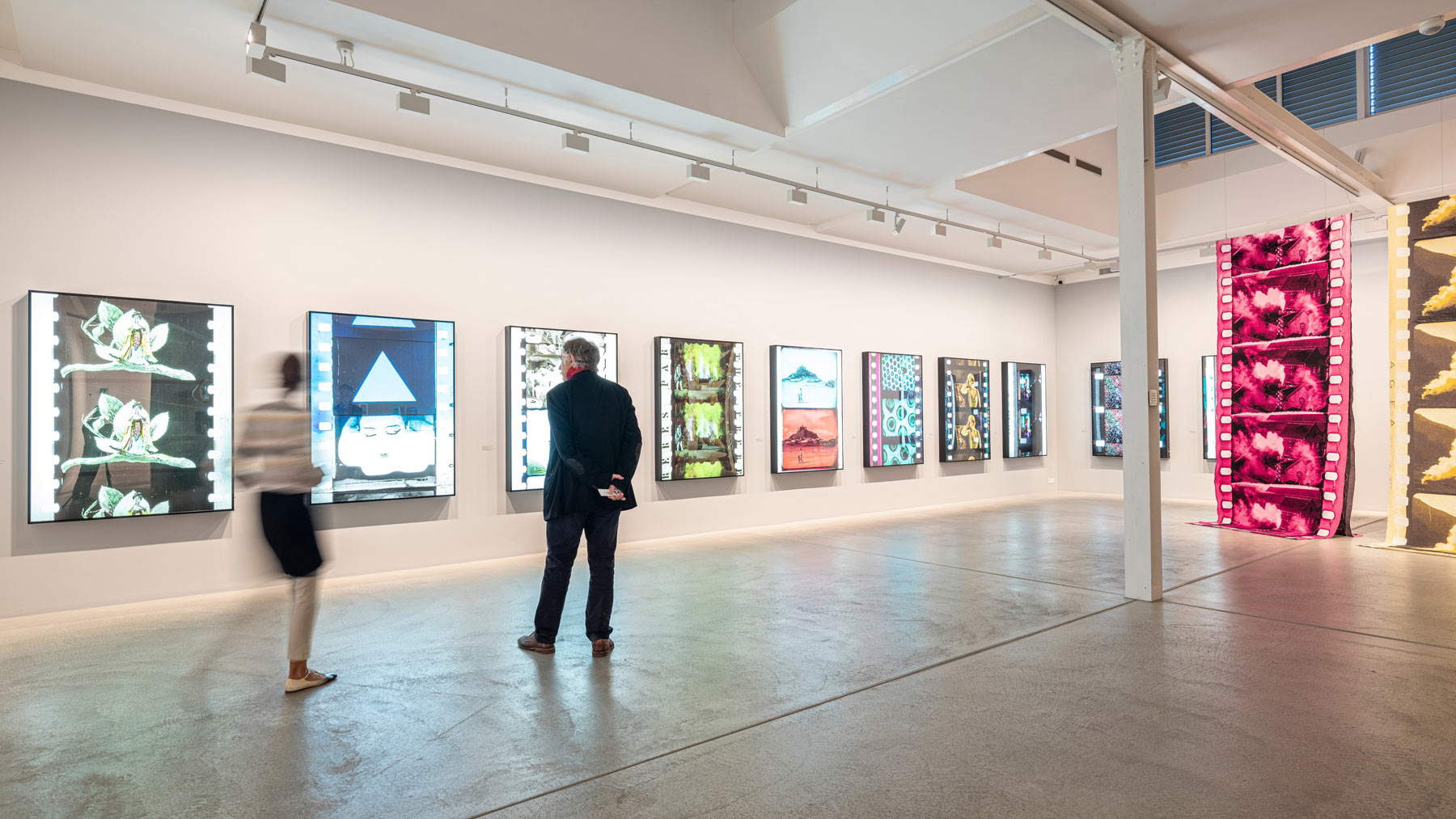 |
| The Fotozentrum of Winterthur |
Among the present archives and bequests are those of Hans Baumgartner, Gotthard Schuh, Kurt Blum, Emil Brunner, Gertrude Fehr, Anita Niesz, Otto Pfenniger, Hans Staub, Heiri Steiner and many others. The Friends of the Fotostiftung Schweiz collection brings together some 1,500 photographs acquired over more than three decades: it focuses on new photography from the 1920s, photography of the FSA - Farm Security Administration in the United States, subjective photography from the 1950s, and portraits of artists and groups of works from Brazil and Japan. Among the photographers in the collection are Niels Ackermann, Rudy Burckhardt, Christian Lutz, Christian Vogt, Berenice Abbott, Brassaï, Mario Cravo Neto, Robert Doisneau, Elliott Erwitt, Jacques-Henri Lartigue, El Lissitzky, Man Ray, and Sebastiao Salgado. The Photographic Collection of the Helvetic Confederation, which has been part of the Foundation since the 1980s, has more than two thousand photographic works, including photojournalism, conceptual photography, documentaries, and pure art photography, and constitutes a broad panorama of Swiss photography over the past three decades. Artists in this collection include Werner Bischof, Robert Frank, Kurt Blum, Henriette Grindat, Peter Knapp, Hans Danuser, and Ernst Scheidegger.
The Fotomuseum Winterthur was founded in 1993 and, as already stated, is dedicated to international contemporary photography and the masters of the history of photography. Photographic work is thus analyzed in all its variety by contextualizing it, through well-known names and young talents, in a dialogue between past, present and future. Central to the museum is in fact exchange and dialogue: it works locally and develops internationally, through an interdisciplinary network of experts who help to stimulate and open up new spaces of experience, all in a dynamic and open manner. Photographic techniques and processes are placed in a broad social and political context to lead to reflection.
Photography has seen a rapid change: a new kind of image has emerged, as photographers in many cases do not just take a picture, but copy, edit, remix and recontextualize existing material. And the public itself is no longer just a consumer of images, but also a producer and even a distributor, through posting on social networks, sending via instant messaging services, or storing in a cloud. All these changes are being approached at the Fotomuseum Winterthur with openness and a willingness to experiment.
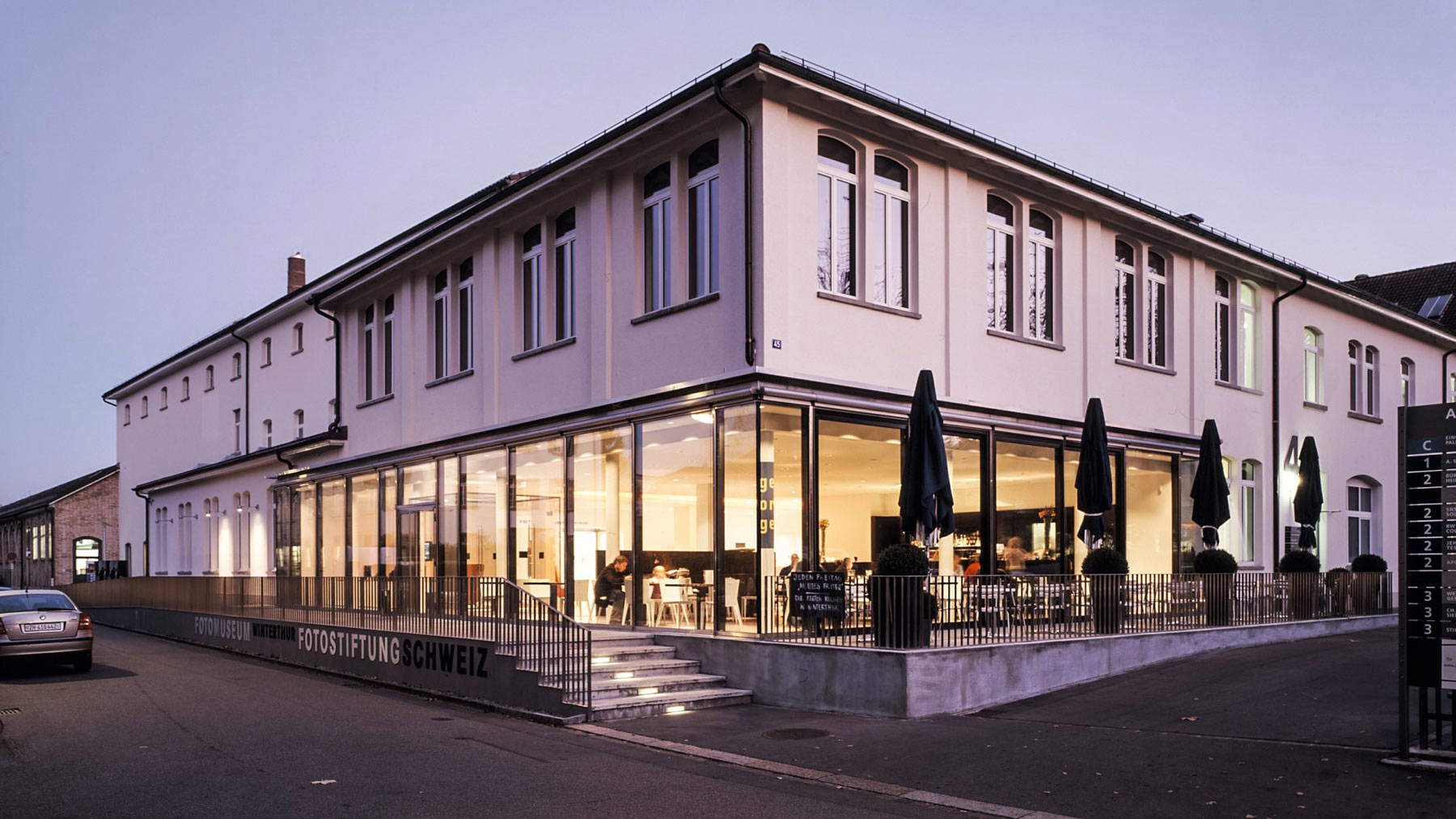 |
| The Winterthur Fotozentrum |
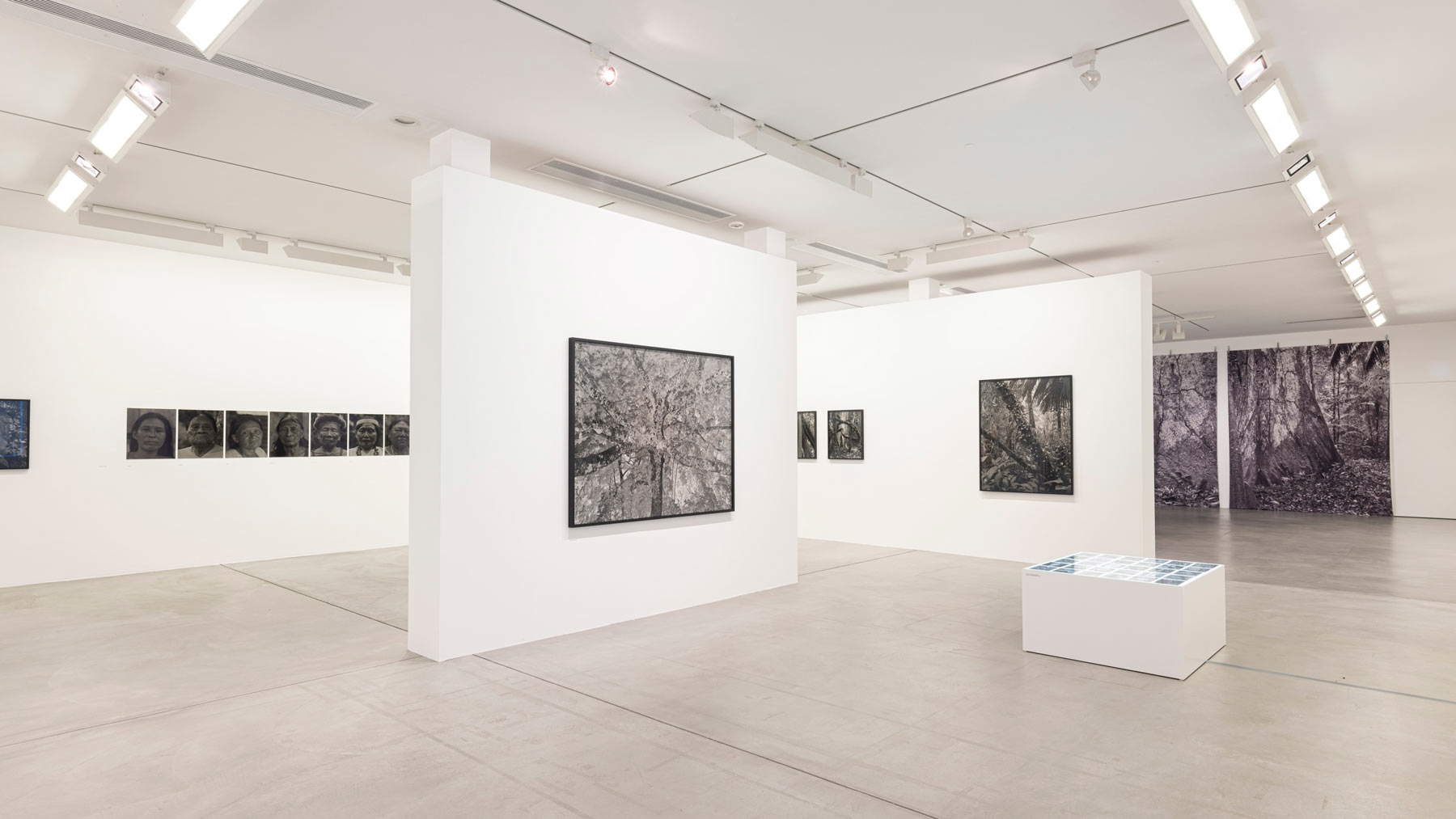 |
| The Winterthur Fotozentrum |
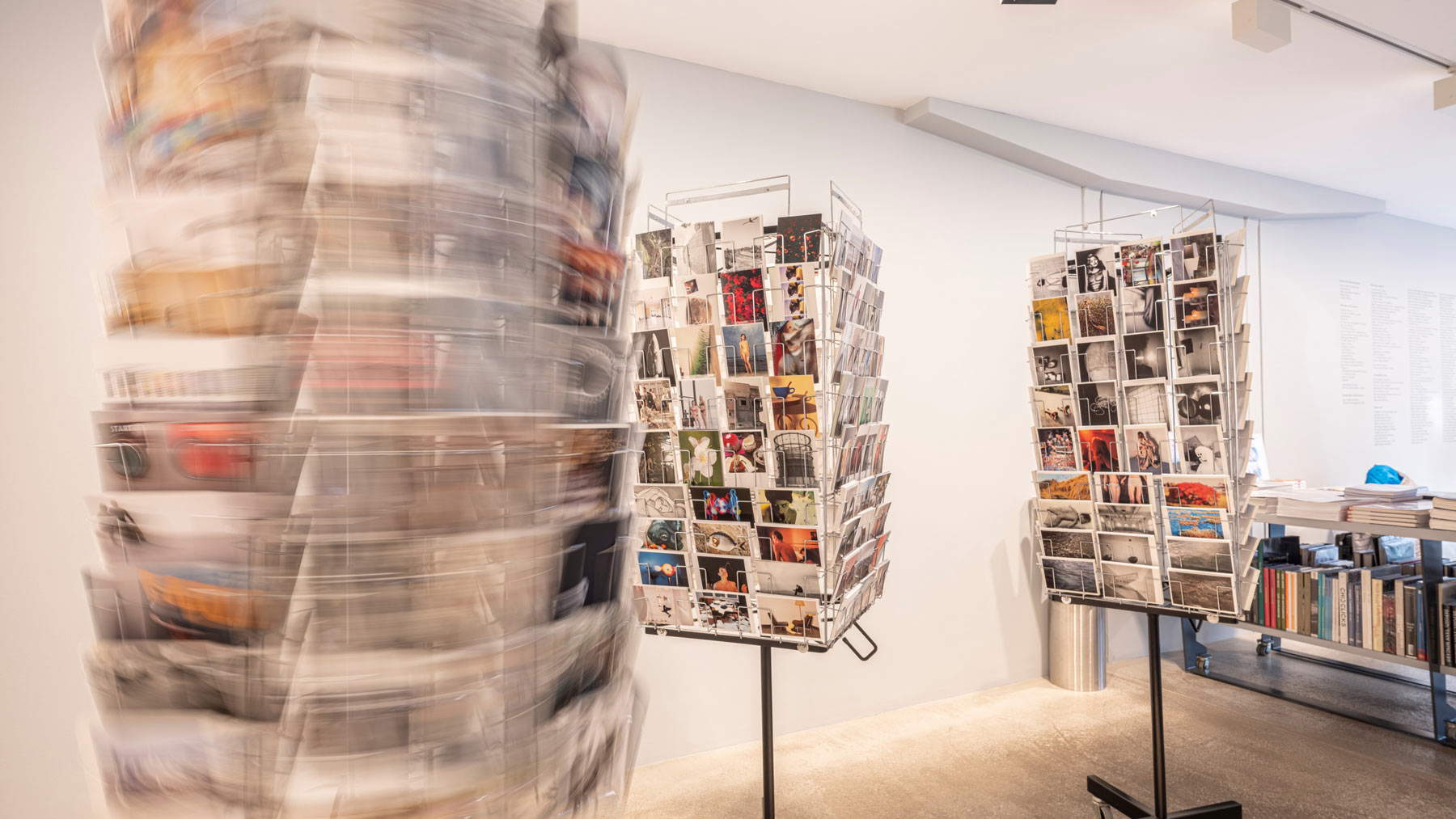 |
| The Winterthur Fotozentrum |
In addition to its permanent collections, the Center for Photography, in the Fotostiftung Schweiz building, is hosting until January 10, 2021, the exhibition Robert Frank. Memories, dedicated to one of the most influential photographers of the 20th century, who passed away in September 2019. His book The Americans, published in Paris in 1958 and in the United States the following year (with an introduction by Jack Kerouac), is considered the most significant photo album of the 20th century, as it profiles American society at the time as a kind of road movie, oscillating between documentation and subjective expression. However, the themes of The Americans could already be perceived in his early works. The Foundation has in its collections some of his little-known works through which it is possible to trace Robert Frank’s subjective style; these come in part from the collection of Werner Zryd, a longtime friend of the photographer. Central to the Memories exhibition is the narrative power of the artist’s photographic language, which developed against all convention and was internationally recognized when Frank had abandoned photography to devote himself to film. In addition to Swiss and European essays, the collection includes works from the United States dating back to the early 1950s that for editorial reasons were never published. The exhibition will be accompanied by books that publisher Gerhard Steil produced with Frank over more than 15 years.
Born in Zurich in 1924, Frank expanded the limits of photography, exploring its narrative aspect like no other. He traveled hundreds of miles between the East and West Coasts in the mid-1950s, eventually producing some 700 films. A selection of eighty-three black-and-white images went into the photographic road movie The Americans.
The early works are the result of an adventurous voyage bound for New York aboard a merchant ship. The ambitious young photographer had come to America from overly oppressive Switzerland with the hope of finding freedom from social and familial constraints. Frank brought with him a 6x6 Rolleiflex and forty photographs taken during his apprenticeship from 1941 to 1946. This portfolio included landscapes, portraits, photojournalistic works, and still lifes that already revealed the talent of the young photographer in his early twenties. After seeing his shots, Harper’s Bazaar magazineart director Alexey Brodovitch hired him as an assistant. Only a few months later, however, tired of photographing fashion accessories and products, he quit this job, wanting to be free, without constraints, in his art. He traveled to Peru and Bolivia the following year and often used his 35mm Leica. In the spring of 1949 he returned to Europe and photographed the annual Swiss cantonal assembly ofAppenzell Ausserrhoden, during which citizens (exclusively men) voted by a show of hands. Already glimpsed in those shots was the critical and penetrating gaze (focused more on the raised hands than on the pageantry of government officials) with which he would later capture the American social and political landscape.
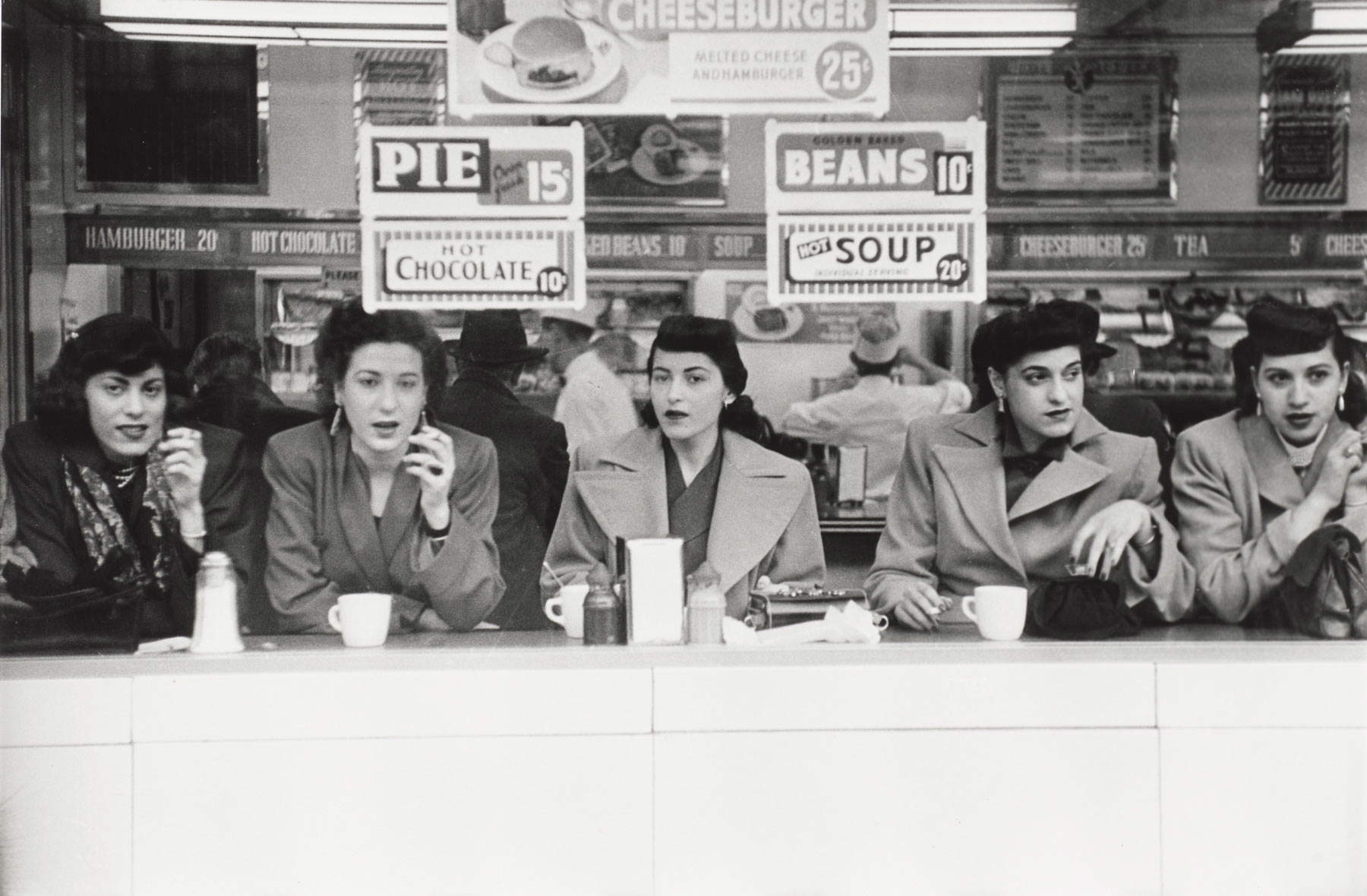 |
| Robert Frank, White Tower (New York, 1948) © Andrea Frank Foundation; courtesy Pace/MacGill Gallery, New York |
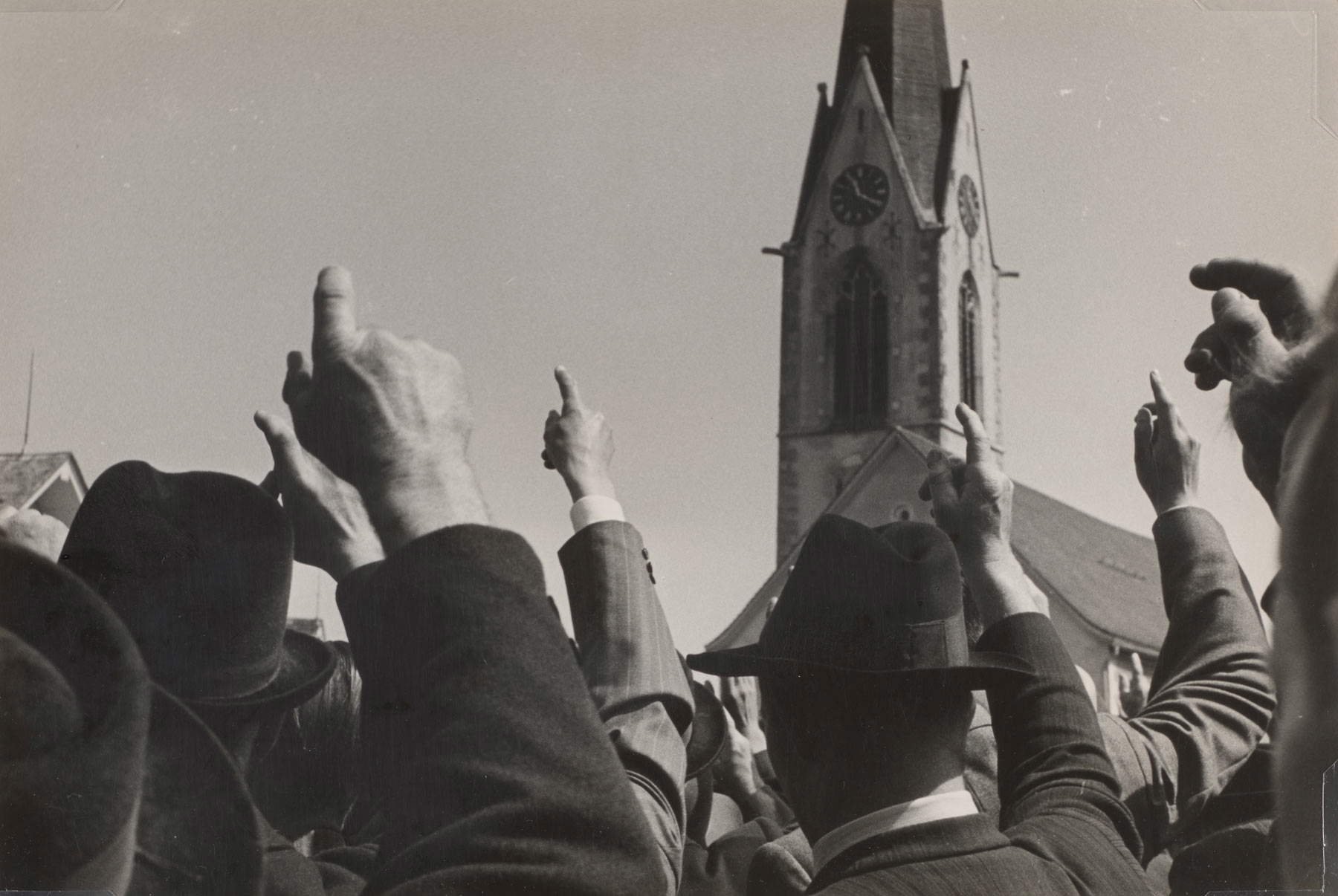 |
| Robert Frank, Landsgemeinde (Hundwil, 1949) © Andrea Frank Foundation; courtesy Pace/MacGill Gallery, New York |
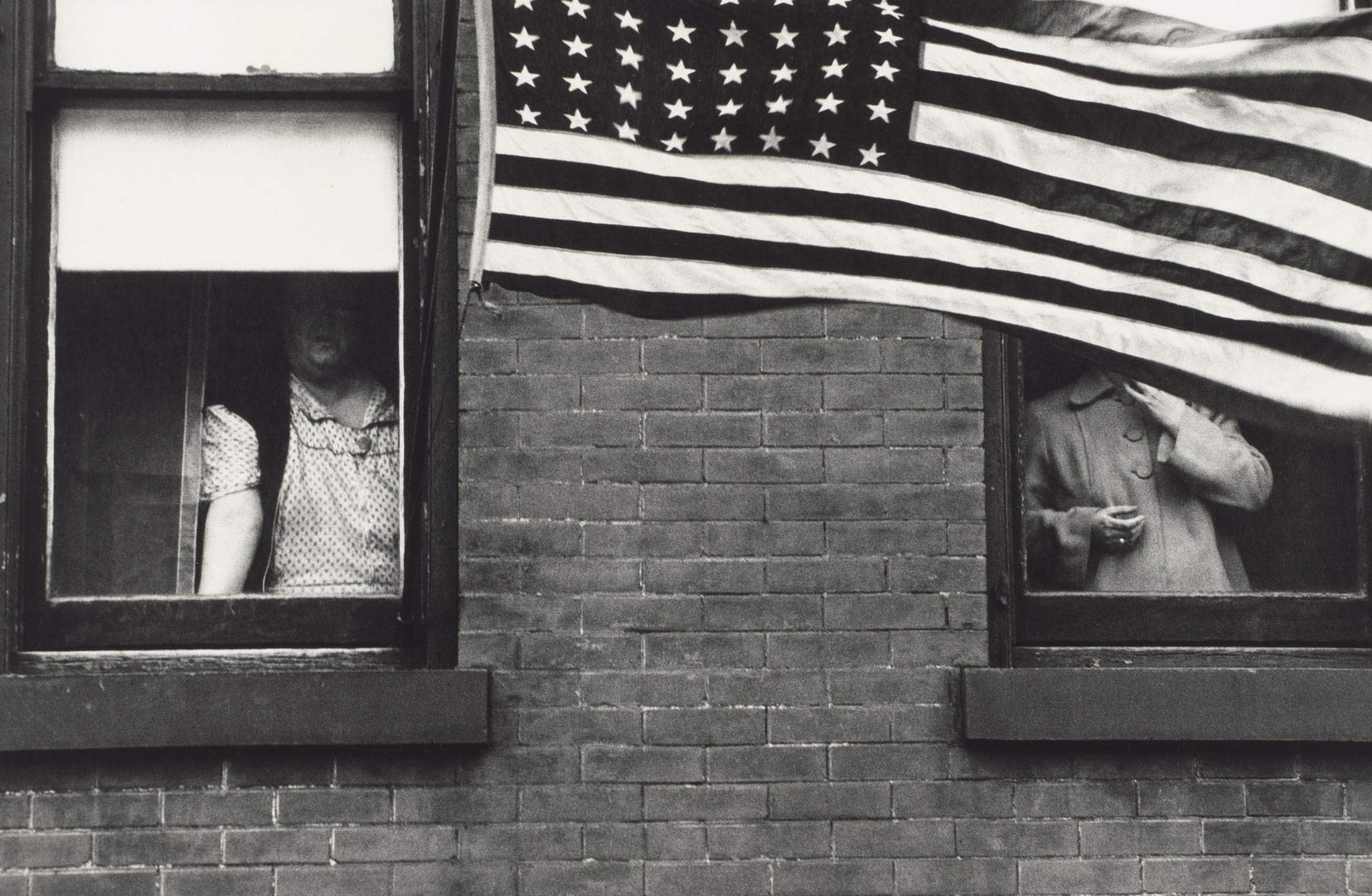 |
| Robert Frank, Parade (Hoboken, New Jersey, 1955) © Andrea Frank Foundation; courtesy Pace/MacGill Gallery, New York |
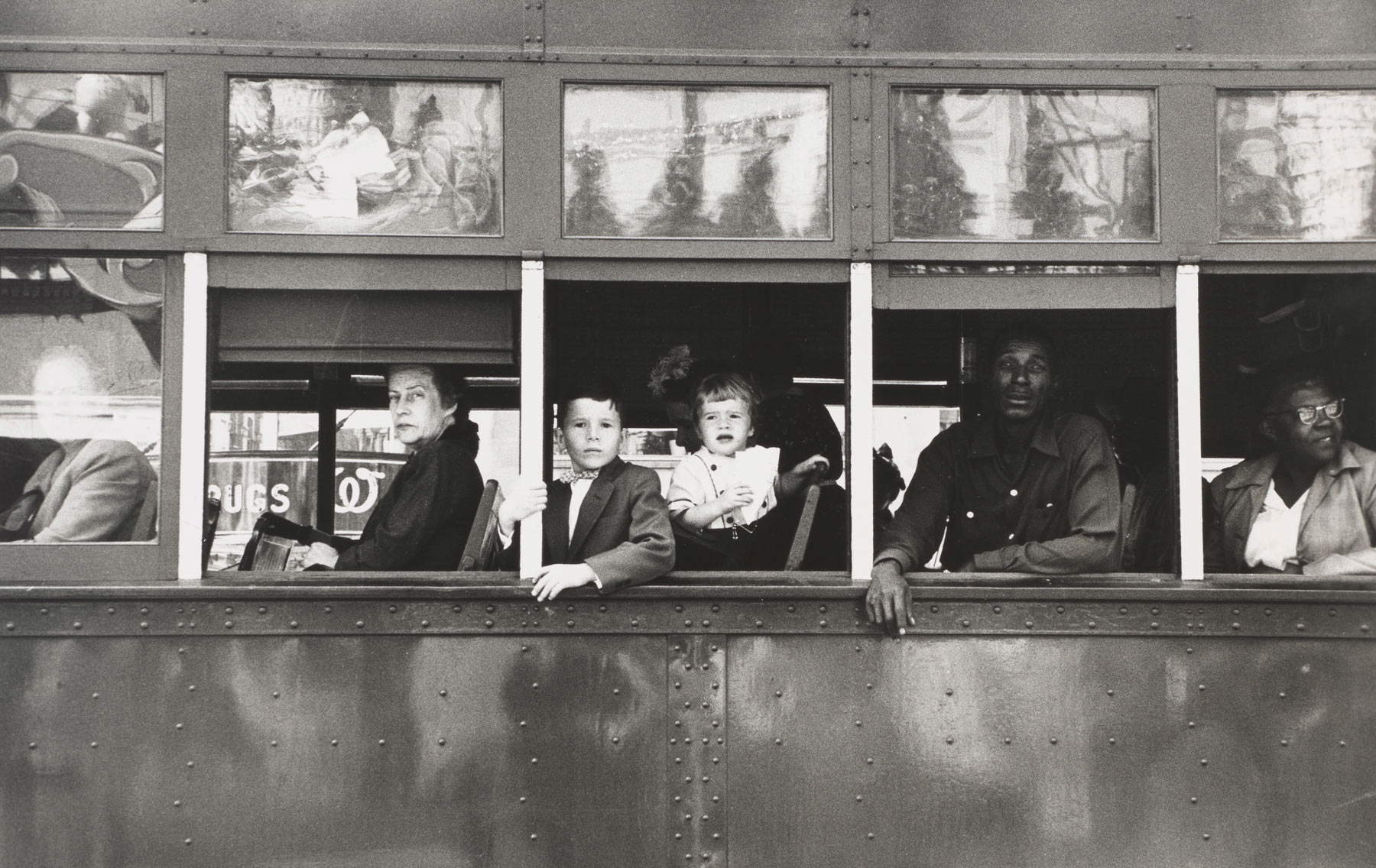 |
| Robert Frank, Trolley (New Orleans, 1955) © Andrea Frank Foundation; courtesy Pace/MacGill Gallery, New York |
In contrast, the Fotomuseum Winterthur is hosting until January 10, 2021 the exhibition Street. Life. Photography. Seventy Years of Street Photography: about 220 works by thirty-six international photographers, taken precisely over seventy years, are on display, presenting a variety of different perspectives on urban life and the ability to take photographs on the street and in the city. Street photography concretely shows the diversity of urban spaces and the people who live in them: fleeting encounters in the streets of international metropolises, quiet suburban scenes, particular everyday scenes, and crowded streets.
The exhibition is divided into five kaleidoscopic sections with different thematic approaches: Street Life, Clashes, Public Transportation, Anonymity and Alienation. The street can be seen as a stage, the urban space as a scenery, and the people who appear are the protagonists of a kind of theater.
The artists involved are Natan Dvir who moves through the streets of New York; Melanie Einzig who captures fleeting moments of everyday New York in small, single images; William Klein who captures in his photographs the relentless movement of the masses and elusive faces; Lisette Model, whose photographs taken in New York, San Francisco and Nice show details of people’s facial expressions and gestures; Loredana Nemes with her shots taken in the subways and metros of Moscow, New York, Paris, London and Bucharest (portraits characterized by a strange feeling of timelessness); Martin Parr who criticizes through his shots the consumerist society and its many excesses; Stephen Shore who explores the perception of urban spaces, lines and signs from various street angles combining them into constructivist units.
 |
| Street. Life. Photography. Seventy Years of Street Photography. |
Comparing these photographic works allows visitors to understand the technical, conceptual and aesthetic developments and various keys to understanding street photography.
The Winterthur Center for Photography thus combines the great masters of photography of the past with contemporary experiments, intending to stay abreast of the times in this field in which the city is considered the most important Swiss hub.
 |
| Winterthur, the heart of Swiss photography, between past, contemporary and experimental |
Warning: the translation into English of the original Italian article was created using automatic tools. We undertake to review all articles, but we do not guarantee the total absence of inaccuracies in the translation due to the program. You can find the original by clicking on the ITA button. If you find any mistake,please contact us.